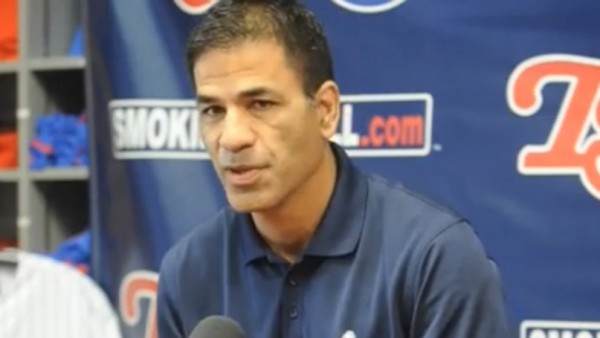In four days, the Chicago Cubs will select 42 more players to join the organization. Not all will sign, but upwards of 25 or so will plant their John Hancock on a contract. With the Cubs picking at number 24 in the first round, they are going to be at the mercy of the draft and what other teams do. Last year, the Cubs kind of zeroed in on lefty pitcher Brendon Little before the draft and had Alex Lange fall to them at number 30. This year’s draft is going to be a little different. Here’s how.
1. Depth—This draft is pretty deep. A player taken in the mid-teens is not going to be that much different in terms of overall potential than a player taken in the mid-to-late 20s. The Cubs could be in on as many as 20 different players at number 24. They could take some players who are either falling to them or they could take someone they think is ascending into the first round.
2. Hitting—After taking close to 50 pitchers the past two years, the Cubs are likely to reinvest in hitting in this draft. That lack of hitting is beginning to show up at the minor league level as the Cubs just don’t have the elite hitters they used to (of course, they are all at Wrigley). But then again, they’re not picking at the top of each round, either.
3. McLeod’s Type—Director of Scouting Jason McLeod has picked all different kinds of players over the past six summers and will do so again next Monday, Tuesday, and Wednesday. While he doesn’t have a type of player that he likes to pick, there are other factors that McLeod tends to focus on. Makeup is one, work ethic is another, controlling the strike zone is a third, and, interestingly, wooden bat experience plays a huge role. In addition, McLeod to get kids who have played either in the Cape Cod League or for USA Baseball in the summer.
4. Best Player Available—While the Cubs may want to emphasize hitting this year, if they have a pitcher that they like that either falls to them or they think may not be there at their next pick, don’t be surprised to see them pull the trigger. For example, if Ethan Hankins is sitting there at number 24, it’s going to be hard for the Cubs to pass up a player who is arguably a top-five talent who could be a top of the rotation arm. The key for McLeod will be to pounce on any of those kind of opportunities.
5. Unpredictability – Out of all the drafts in the Theo Epstein era since 2012, there’s always been a certain transparency to what the Cubs are doing. I’m not getting that sense this year. That might be a good thing considering the farm system has several needs The Cubs shouldn’t tie themselves down to getting all hitters on days one and two or a set amount of pitchers on day three. Let the draft come to them.
6. Rebuilding the System—This draft is not going to rebuild anything. Yes, the Cubs do have four picks in the top 80 and five in the top 100 selections. However, that is not going to be enough to turn around a system that is ranked in the bottom 10 in baseball. The Cubs are more likely to get the high-end talent they seek an international free agency rather than the draft.
This draft is going to be built for the long haul. Most of the Cubs’ current roster has a specific expiration date on their contracts. Once the Cubs get these new players in the system this year, there’s no rush to get them to Chicago as soon as possible. Bryant, Schwarber, and Happ ruined slow expectations for everyone. If it takes three or four years to go get them to Chicago, that’s OK.
7. My Pick(s)—Earlier in the NCAA season, I was all in on Wichita State third baseman Alec Bohm. The problem now is that Bohm went from the mid-20s to possibly number three for the Phillies. My next favorite college bat is Trevor Larnach of Oregon State. An outfielder, he is a player on the rise who has room to fill out and power up. Bohm’s teammate Greyson Jenista plays all three outfield spots and hits well, doing so with excellent results in the Cape last summer. He also plays first. His versatility could be a difference maker. Arkansas’ pitching ace Blaine Knight comes with a 2018 pedigree of pitching well in big games against some of the best teams in the SEC. He put up a 2.78 ERA in 15 starts, and struck out 86 in 87 1/3 innings. My sleeper pick for later in the draft is the University of Tampa’s David Lebron, a pitcher who struck out 103 in 90 1/3 innings. A senior, he is likely to go on day two.
I am looking forward to seeing who the Cubs take and I will be back next week with a round up of each day.
Lead photo courtesy Knoxville News Sentinel
